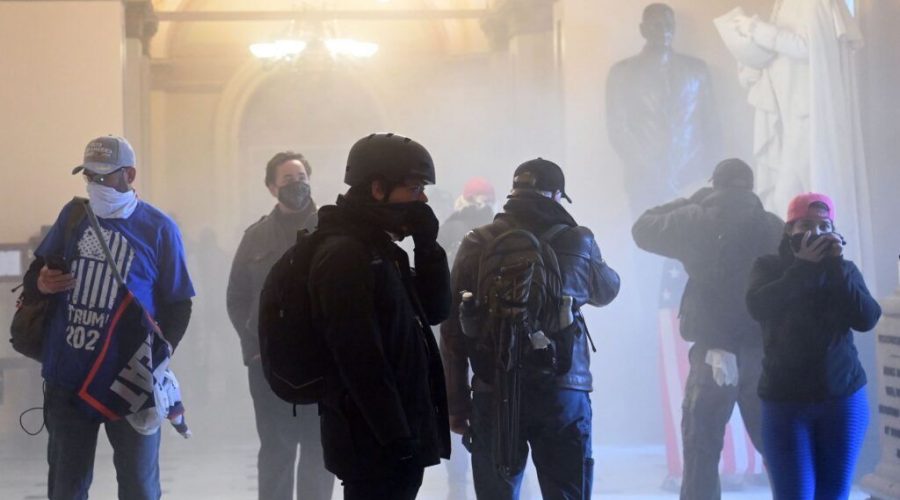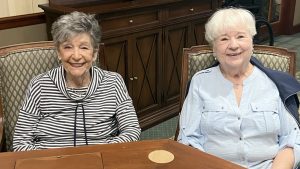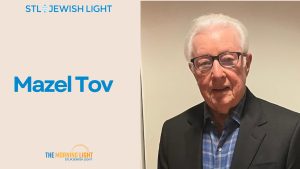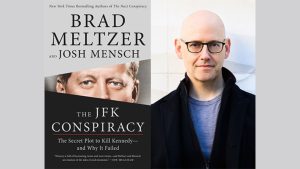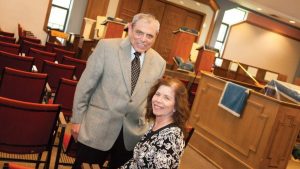‘Our worst fears realized’: Extremism watchdogs, after months of warnings, watch the violence in DC
Published January 6, 2021
Extremism watchdogs said there could be violence in the streets. They said minority communities — Jews among them — could be put at risk. They said that the incessant, false claims of a rigged election, of a fraudulent vote, of a conspiracy to bring down the president, could all lead to violence on or after Election Day.
All year, and especially after President Donald Trump said he would not accept the election results in November, people who monitor the far right in America warned about where America could be headed. Officials and analysts worried openly about attacks on police or threats to synagogues or polling places in Black neighborhoods.
One dire document, produced by the New Jersey Office of Homeland Security and Preparedness, predicted, among its more extreme scenarios, that conspiracy theorists may “threaten and target federally elected representatives [and] government institutions.”
That language came to life on Wednesday when a mob of Trump supporters stormed the U.S. Capitol. Congress, in the middle of a hearing about the election results, escaped into hiding. Extremists, carrying the symbols of their hate, sat at the dais in the Senate chamber and peered into government computers, abandoned by staffers who fled in haste. The vice president was rushed to a secure location while the president said “we love you” to the people who forced him to flee.
And someone — so far unnamed — was shot and killed in the middle of a crowd that was forcibly occupied the halls of government.
“Yeah, this is it,” said Heidi Beirich, who’s been monitoring extremists for 20 years, when asked if Wednesday’s chaos is what she worried about before the election. “This is our worst fears realized.”
“Everyone in my world has been warning of this exact thing,” she added.
Watching their predictions come true on TV, people in the anti-extremism world on Wednesday all said they got no pleasure from saying “I told you so.”
“This seems to be a logical conclusion to so much of what we have seen throughout the year, whether it’s reopen protests and efforts to delegitimize state governments, whether it’s conspiracy theories,” said Oren Segal, vice president of the Anti-Defamation League’s Center on Extremism. “These things have consequences. People pay attention, and they animate those who could care less about their democracy.”
Like everyone else, extremism watchdogs used the word “unprecedented” a lot. That word also kept coming up three years ago, when white supremacists marched in Charlottesville, Virginia, in an event that Joe Biden said inspired him to run for president, because he didn’t want to live in an America that tolerated “the same anti-Semitic bile heard across Europe in the ‘30s.”
The chaos at the Capitol resembled what happened in Charlottesville in certain ways. Both were rallies with a lot of extremist groups that included violence. Someone was killed then, too. Back then, Trump called the extremists “very fine people.” Today, in a video also urging the mob to disperse and “go home,” he told them, “We love you.”
But the analysts said they should not be equated. After all, said Michael Masters, the CEO of the Secure Community Network, a Jewish security agency, “why the protest is occurring is different.” Brad Orsini, the group’s senior national security adviser, said, “I look at all these incidents at face value, as they stand alone.”
In other words: Neo-Nazis marching with swastikas and chanting “Jews will not replace us” is somewhat different than pro-Trump extremists (including neo-Nazis) storming the Capitol and fighting with police officers. They’re both really bad, according to these watchdogs, but they’re each bad in their own way.
What unites them, Segal said, is what unites all extremists: a sense of grievance. They feel that something has been taken away from them, and they want to fight the people who took it. In Charlottesville, the neo-Nazis wanted to fight the Jews for taking away their imagined white societies. On Wednesday, the mob wanted to fight the government for “stealing” Trump’s (imaginary) victory.
“Today wasn’t about Jews not replacing us,” he said. “Today it was about something else being taken away: the America that they want, but that’s something that animates extremists all the time — this concept that something is being taken away from them by somebody.”
And unlike Charlottesville, the violence today wasn’t really about the Jews — though Orsini said Jews might be more attuned to it than other people. “This resonates more so because we’ve seen this uptick, this rhetoric of anti-Semitism. We’ve seen violent attacks,” he said.
The difference now is that Wednesday’s mob affected everyone in the country.
“What folks are seeing today, it’s not just a problem for Jews, it’s an American problem,” Segal said.
Extremism researchers aren’t sure what comes next. They want order to return to the Capitol, and they want the new administration to do what this one has not — to urge calm, to call out hate unequivocally.
But mostly, they want people to listen.
“I hoped I’d be out of a job years ago,” said Beirich, who co-founded the Global Project against Hate and Extremism only at the beginning of 2020, after a long career studying hate. “I didn’t want this to keep metastasizing and growing.”



